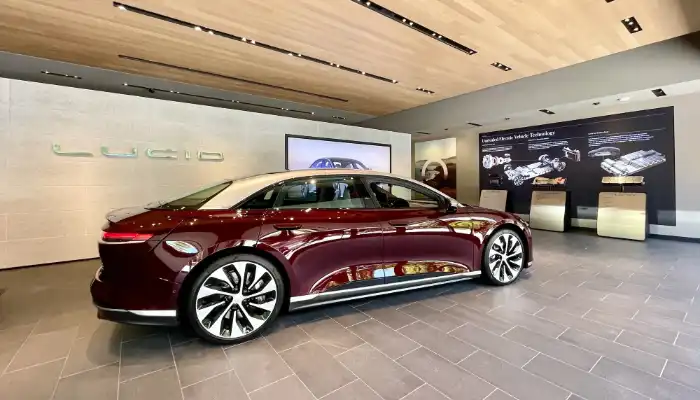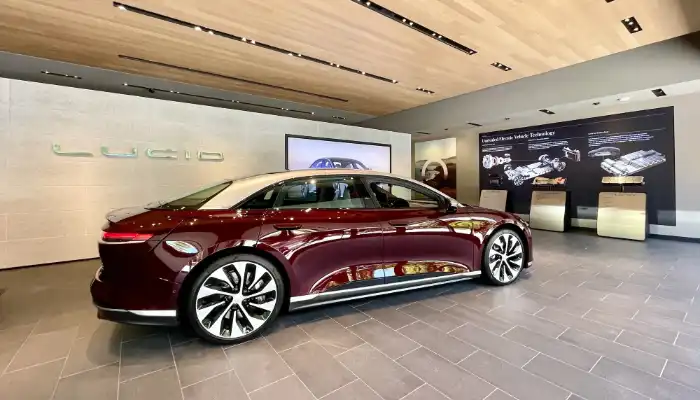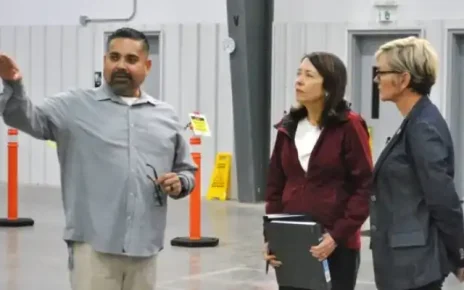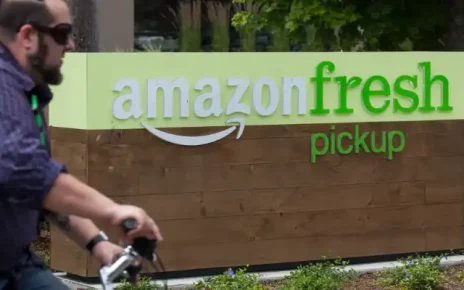The EV revolution has been happening, with sales worldwide skyrocketing past 10 million in 2022. This rapid expansion results from a combination of various elements, including heightened environmental concerns, advances in battery technology, and, most importantly, government policies that promote the adoption of EVs.
In this blog, we will take a look at what went wrong with Washington State’s latest attempt to become an EV-friendly state and how the failure of this important legislation can disrupt the clean transportation goals of the state.

The Allure of Electric: A Market Poised for Takeoff
Sales of electric vehicles are tripling every three years globally; three years ago, there were only less than one thousand e-vehicles on the roads, while now their number has topped three million. In fact, for just the US market share alone, electric vehicles exceeded 10 percent in 2022, which signals immense progress towards mass acceptance. This change is due to several reasons:
- Environmental Imperative: Transportation is a significant contributor to greenhouse gas emissions; thus, breathing new life into climate change control efforts becomes impossible if a zero-tailpipe emission vehicle is not introduced.
- Technological Advancements: Battery technology has significantly improved, leading to increased mileage coverage per charge and reduced charging durations, which are major concerns for people interested in owning electric cars, hence making them better suited for daily commutes.
- Government Incentives: Governments worldwide offer incentives for buying green vehicles, such as tax credits, refunds, or lower registration fees, among others. These incentives reduce the up-front costs of EVs, thereby making them more competitive against internal combustion engine-driven vehicles.
Building a Charging Network: The Role of Government Support
Government support for EVs goes beyond monetary benefits through policies meant to encourage their usage by consumers. Here’s how:
- Charging Infrastructure: Range anxiety—one of the greatest fears that potential buyers have—would be considerably mitigated if an efficient network of chargers was built across different regions. The development of charging infrastructure can be boosted by government funding, thereby making EVs a viable option for intercity trips.
- Research and Development: To spur research and development in battery technology that will lead to an increase in distance and range, a decrease in charge time, and a reduction in the cost of EVs, governments have been chipping in financially.
- Consumer Education: Educating the general public about the benefits of electric vehicles as well as debunking the myths regarding them can lead to behavioral change in a positive direction for the environment.
For governments to encourage the adoption of electric vehicles and hasten the shift towards cleaner modes of transport, they must adopt policies that combine financial incentives with infrastructure development and consumer education initiatives.
A Missed Opportunity: The Failed Washington Law
Washington attempted to become an EV-friendly state just like other states by introducing comprehensive legislation aimed at promoting the uptake of electric vehicles. Below are some of the things the law sought to achieve:
- Increased Rebates: These would allow higher rebates for customers who purchase new or used EVs under this law. This would directly reduce their prices, making them more attractive to a wider range of buyers.
- Charging Infrastructure Investments: Arranging funds allocated towards creating an extended network with broad coverage over all parts will help address range anxiety while also providing ease and convenience for owning E-Vehicles.
- Workplace Charging Requirements: Companies having a certain number of parking spaces would be required under this legislation to install recharging stations; hence, workplace recharging facilities make it easier for more people to go electric.
However, this proposed law failed in the Washington State legislature. The reasons behind this failure were varied.
- Political Divisions: The bill failed to become law because political parties disagreed on its scope and cost.
- Industry Concerns: Some sectors of the auto industry expressed concerns about jobs and other costs related to the legislation.
Stalled Progress: A Failed Law’s Fallout
There are several ways in which this failure could significantly impact Washington’s EV market:
- Slowed EV Sales Growth: Transitioning to electric vehicles (EVs) may be hindered without financial incentives and infrastructure investments. This is because most buyers may not opt for EVs due to their high initial cost as well as limited charging facilities. Consequently, the growth of electric vehicles in Washington will be slowed down.
- Lagging Behind Other States: Meanwhile, states with more supportive policies are likely to witness faster EV adoption rates. In addition, this might place Washington at a disadvantage when it comes to attracting manufacturers, dealerships, or any other supporting sector for EVs.
- Environmental Impact: Moreover, slower adoption of EVs would mean continued reliance on gasoline-powered vehicles, leading to increased emissions and counteracting progress made towards cleaner air and climate change goals in Washington State.
Looking Ahead: Overcoming the Hurdles
Despite failing, this bill marks backward steps for electric vehicle (EV) programs in Washington, but not the end yet. Below are some recommendations stakeholders can put into practice:
Renewed Legislative Efforts:
Advocacy groups and legislators can work together to draft another bill that will be more inclusive within all participants’ party lines, if any. This may involve reducing the amount of financial incentives given or finding alternative sources of funding. Additionally, public pressure campaigns as well as data-driven evidence showing long-term economic benefits from using electric energy-powered motorized transport can also help us gain support for a modified proposal during its re-introduction into the assembly floor.
Public-Private Partnerships:
Collaboration between government and private sector utilities, automakers, or even environmental organizations can be a formidable force for change. Public funds are strategically leveraged to attract private investment in the development of charging infrastructure, battery research, and public education programs.
Focus on Local Initiatives:
Although there might be a statewide solution impasse, it does not necessarily mean that nothing can be done about it. For instance, cities and county governments can implement policies favorable to electric vehicles, such as providing local incentives, streamlining processes around permitting the installation of charging points, and having exclusive parking bays painted for EVs only. Therefore, these efforts at the grassroots level will create an environment that is more appealing for owning electric motor cars while concurrently influencing the state legislature on popular demand for clean transportation modes.
Engaging the Community:
Educating the public about the benefits of EVs through outreach programs is very important in changing their attitudes towards them. Furthermore, awareness campaigns could also use test drives by residents or partner with mass media outlets located within its geographical boundaries so that they begin considering electric cars seriously.
Leveraging Existing Incentives:
There are already existing federal tax credits for purchasing electric cars in America. These incentives have to be made widely known so that people will benefit from them even though there is no financial support from the state’s government anymore.
By working together, stakeholders can overcome the hurdles created by the failed legislation. By implementing a combination of these strategies, Washington can still achieve its clean transportation goals and become a leader in the EV revolution.
Long-Term Implications
The failure of Washington’s EV legislation serves as a cautionary tale for other states considering similar initiatives. Here’s a look at what lies ahead:
- Lost Economic Opportunities: A stagnant EV market could fail to take advantage of multiple economic opportunities that include clean energy jobs, the manufacture of electric vehicles, and the development of infrastructure that supports this new generation of clean transport.
- Lagging in Climate Action: This will hinder movement towards national and global climate change objectives.
However, Washington’s experience might serve as a lesson to other states too:
- Drafting Effective Legislation: By studying Washington’s failed attempts, other states can draft more balanced and effective EV legislation that addresses all stakeholders’ concerns.
- The Importance of Federal Initiatives: Strong federal policies are vital for incentivizing EV adoption and supporting infrastructure development, which are essential for speeding up the United States’ shift toward cleaner transportation modes.
Solutions and Recommendations
Going forward on the road to sustainable transportation with the widespread adoption of electric vehicles, there is a need for joint effort. Below are some solutions and recommendations:
- Renewed Legislative Efforts: Advocacy groups and legislators in Washington should collaborate on crafting an amended EV bill to address these concerns. These would involve:
- Finding Common Ground: Striking a balance between the level of financial incentives offered and the overall cost to the state. For example, there may be a tiered rebate structure based on vehicle price or income levels within each tier.
- Phased Approach: Phasing in the legislation, starting with small investments into charging infrastructure and rebates, then gradually ramping up support as the program succeeds.
- Industry Collaboration: Including representatives from automakers, utilities, and environmental organizations in developing legislation ensures it is comprehensive enough to meet all stakeholder requirements.
- Collaborative Efforts: Forming a strong coalition of supporters is key for success on legislative matters. It can be achieved through:
- Public Awareness Campaigns: Educating people about the advantages that come with driving electric vehicles, including debunking myths surrounding range limits and charging, as well as highlighting environmental and economic benefits.
- Grassroots Advocacy: Asking people to contact their elected officials in support of EV policies.
- Industry Partnerships: Joining forces with vehicle manufacturers, charging station operators, and utility firms to come up with innovative solutions and promote the adoption of EVs.
- Investment in Public Charging Infrastructure: Range anxiety is one of the key barriers to widespread EV adoption. Hence, Washington should:
- Utilize Public-Private Partnerships: Partnering with private companies can leverage expertise and resources to quickly deploy a statewide network of charging stations.
- Focus on Strategic Locations: Priority should be given to siting charging stations along major highways, within urban areas, and near multi-unit dwellings to enhance accessibility for EV owners.
- Future-Proofing Infrastructure: Investing in charging stations that will have the capability to charge future electric vehicles at faster rates too.
- Lead by Example: As far as the promotion of EVs by the state government is concerned, it can be done through:
- Electrifying State Fleets: Changing government-owned vehicles into electric models would demonstrate commitment towards clean transportation and create a robust market for used EVs as well.
- Streamlining Permitting Processes: Simplifying processes for businesses and individuals installing charger units may encourage widespread reception while minimizing administrative burden.
- Offering Tax Breaks for Businesses: Encouraging private sector investments in this infrastructure could happen through tax incentives such as rewarding businesses that put up charger points or start car-sharing programs using electric vehicles.
- Consumer Education and Outreach: Many consumers are still not familiar with EVs or have misconceptions about them, yet Washington can address this challenge by:
- Educational Campaigns: Public awareness campaigns can be launched that show how EVs are beneficial in terms of reduced running costs, environmental benefits, and performance attributes.
- Test Drive Events: Organizing events where consumers can test-drive electric vehicles and experience the technology themselves.
- Loan and Lease Programs: Offering low-interest loan and lease programs for EV purchases can help overcome the initial cost barrier for some consumers.
Conclusion
The failure of Washington’s proposed EV legislation is a setback, not a death sentence. However, through learning from this experience, bringing stakeholders together, and establishing a comprehensive approach inclusive of financial incentives, infrastructure development, customer education, and industry partnerships, Washington may still achieve its clean transportation objectives and become a major player in the EV revolution. Changing over to more sustainable transportation requires the involvement of all of us, and by taking these steps, Washington will lead us down that path towards cleaner air tomorrow.




